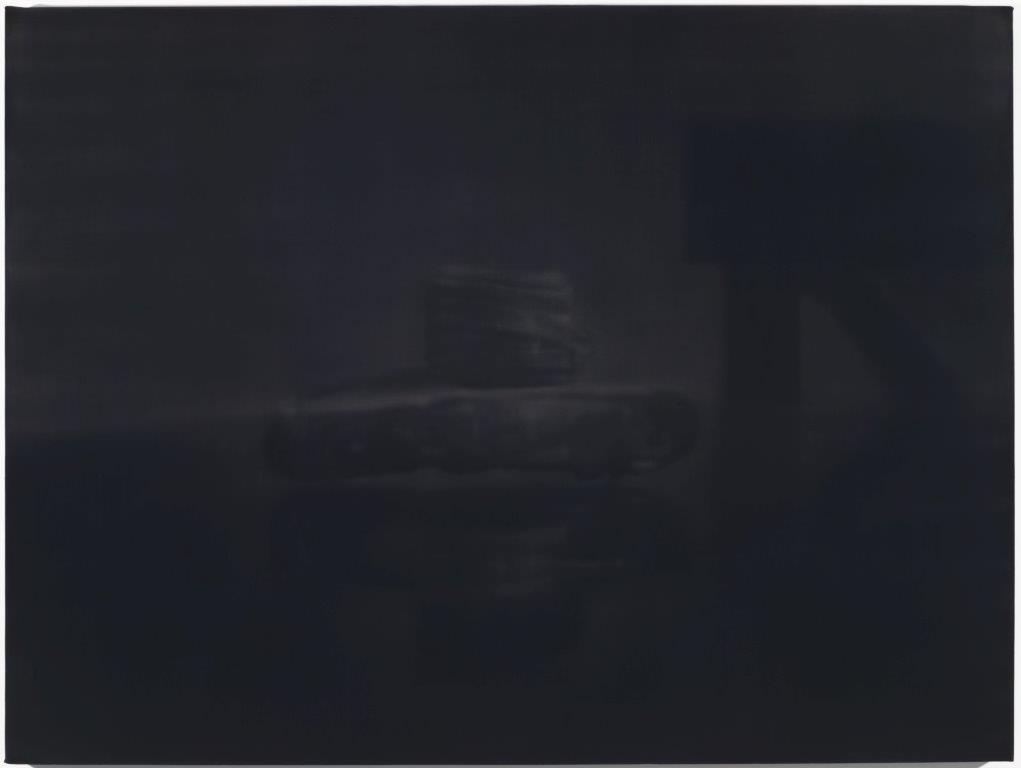Like other artists who emerged in the 1980s as part of the so-called Pictures Generation (including Cindy Sherman, Sherrie Levine, and Robert Longo), Troy Brauntuch has, for many years, made work that delves into the complex presence of imagery in contemporary life. Many of his photorealistic drawings and paintings are monochromatic, and at first glance are so optically faint they are almost imperceptible. As the eye adjusts to his work, images of seemingly common, everyday scenes emerge and take on a strange and haunting psychological weight. Like much of his recent work, Mark’s Camera 3 is the result of layers of multi-colored pigment meticulously applied on dark cloth. The camera, a tool for viewing and recording, now becomes the subject of a work that explores the nature of vision and the relationship between painting and photography. The meaning of the work shifts, however, with the knowledge that its source image is a photo Brauntuch took of a friend’s camera that was charred when his house burned down. Brauntuch was included in the 2006 Whitney Biennial, and his work is in numerous public collections, including the Metropolitan Museum of Art, New York; Museum of Modern Art, New York; and The Hirshhorn Museum and Sculpture Garden, Washington, D.C.
